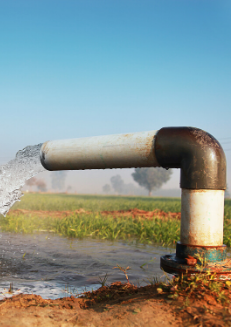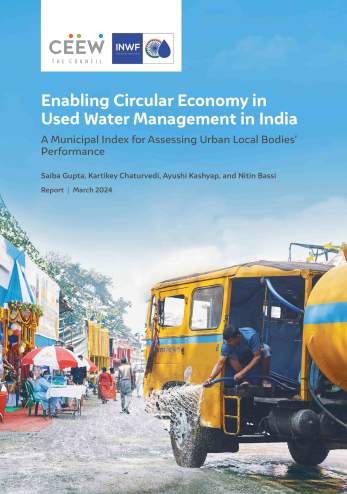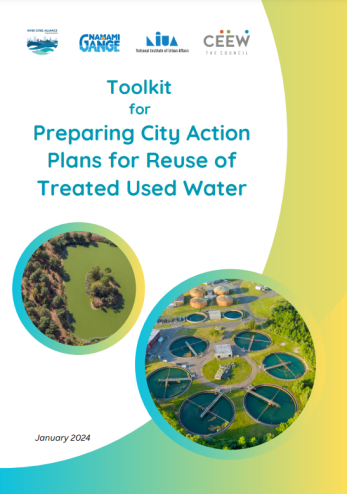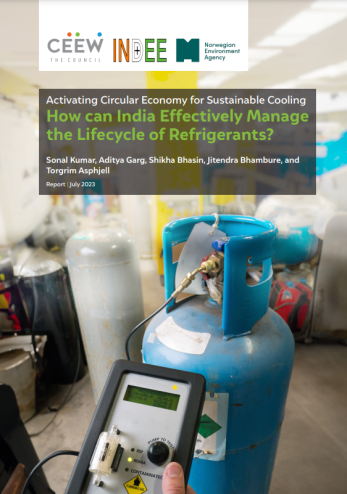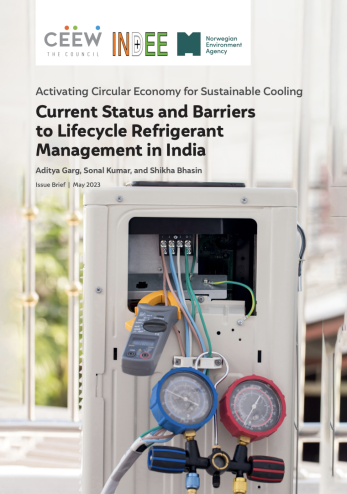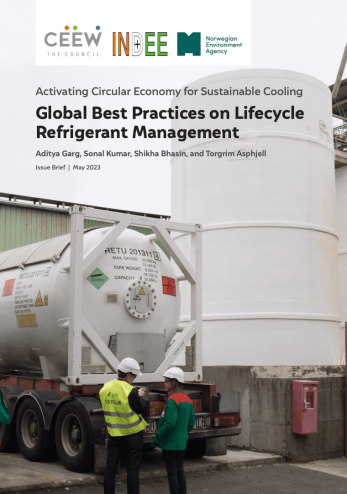Paper
Developing Capacity for Sewage Treatment
An important step towards achieving energy and water security for India
Rudresh Sugam, Poonam Nagar Koti, Kangkanika Neog
May 2017 | Circular Economy, Sustainable Water
Suggested citation:Sugam, Rudresh Kumar, Poonam Nagar Koti, and Kangkanika Neog. 2017. “Developing Capacity for Sewage Treatment: An Important Step Towards Achieving Energy and Water Security for India”. Water and Energy International, 60 (2).
Overview
This paper estimates the total freshwater demand by Indian thermal power plants (TPPs) and compares these with treated wastewater available at the state level. It highlights three scenarios: Waste Water (WW) availability from (I) current operational capacity of Sewage Treatment Plants (STPs) (II) current installed capacity of STPs; and (III) all the WW generated. These scenarios compare the demand-supply numbers for the 19 states, where freshwater (FW) based TPP is currently installed. Further, the paper also describes the implications of diverting WW towards industries from activities such as peri-urban agriculture. Finally, it highlights the significant impacts of using untreated sewage water, such as those on health, environment and productive activities.
Key Highlights
- India has 175 coal and gas-based TPPs generating 161 GW of electricity. Eighty-five per cent of the plants withdraw FW for cooling purposes and nearly 15 per cent use seawater.
- Nearly 7 billion units (kWh) of coal power, with an estimated potential revenue of 24 billion rupees were lost in the first five months of 2016 due to lack of water for cooling.
- In India, per day sewage generation is 61948 million liters (ML) from urban areas and the installed sewage treatment capacity is 23277 ML (38 per cent of the sewage generated).
- In 2017, 70 per cent of sewage went untreated. This has severe health and environmental implications.
Scenarios for water supply-demand estimation
Scenario 1: The water demand was compared against the total water available from the operational STPs.
- Only five states - Delhi, Karnataka, Kerala, Maharashtra, and Tamil Nadu - could support their entire FW-based TPP water demand from the treated sewage.
- An additional 52 GW FW TPP could be supported in these states by the operational STPs.
Scenario 2: It analyses the states that would be able to support FW based TPPs if the entire installed capacity of STPs is made functional. Haryana is added to the list of states in Scenario 1.
- The operational capacity of STPs was around 80 per cent of the installed capacity across India because some STPs have become fully/partially non-functional while some are getting built.
- An additional capacity of 64 GW of FW based thermal power plants could be supported in Haryana, Delhi, Karnataka, Kerala, Maharashtra, and Tamil Nadu if the installed STPs are working at full capacity.
Scenario 3: It is assumed that the entire sewage generated is being treated and used for running the TPPs. It emphasises on the states that would be able to support 100 per cent of TPPs dependant on FW.
- More than half the states (10 out of 19 states) would be able to support FW dependent TPPs.
- An additional capacity of 194.24 GW of FW based TPPs could be supported in these states if the entire sewage is treated and supplied to the TPPs.
10 out of 19 states would be able to support FW dependent TPPs and an additional capacity of 194.24 GW could be supported in these states if the entire sewage is treated and supplied to the TPPs.




